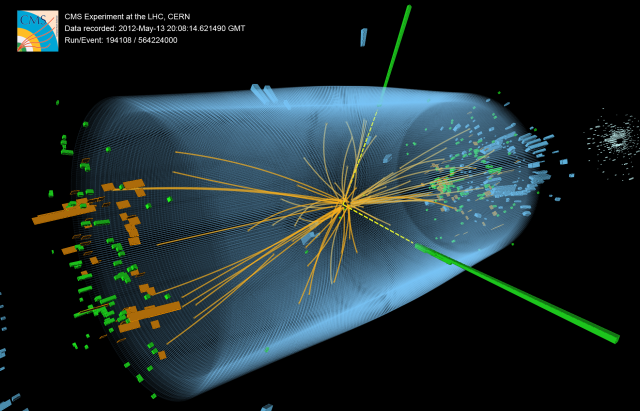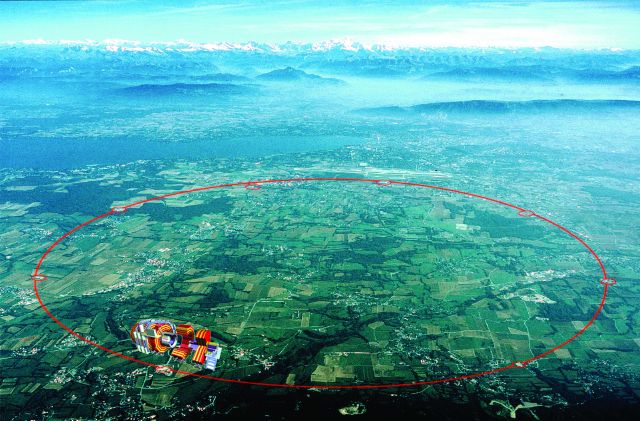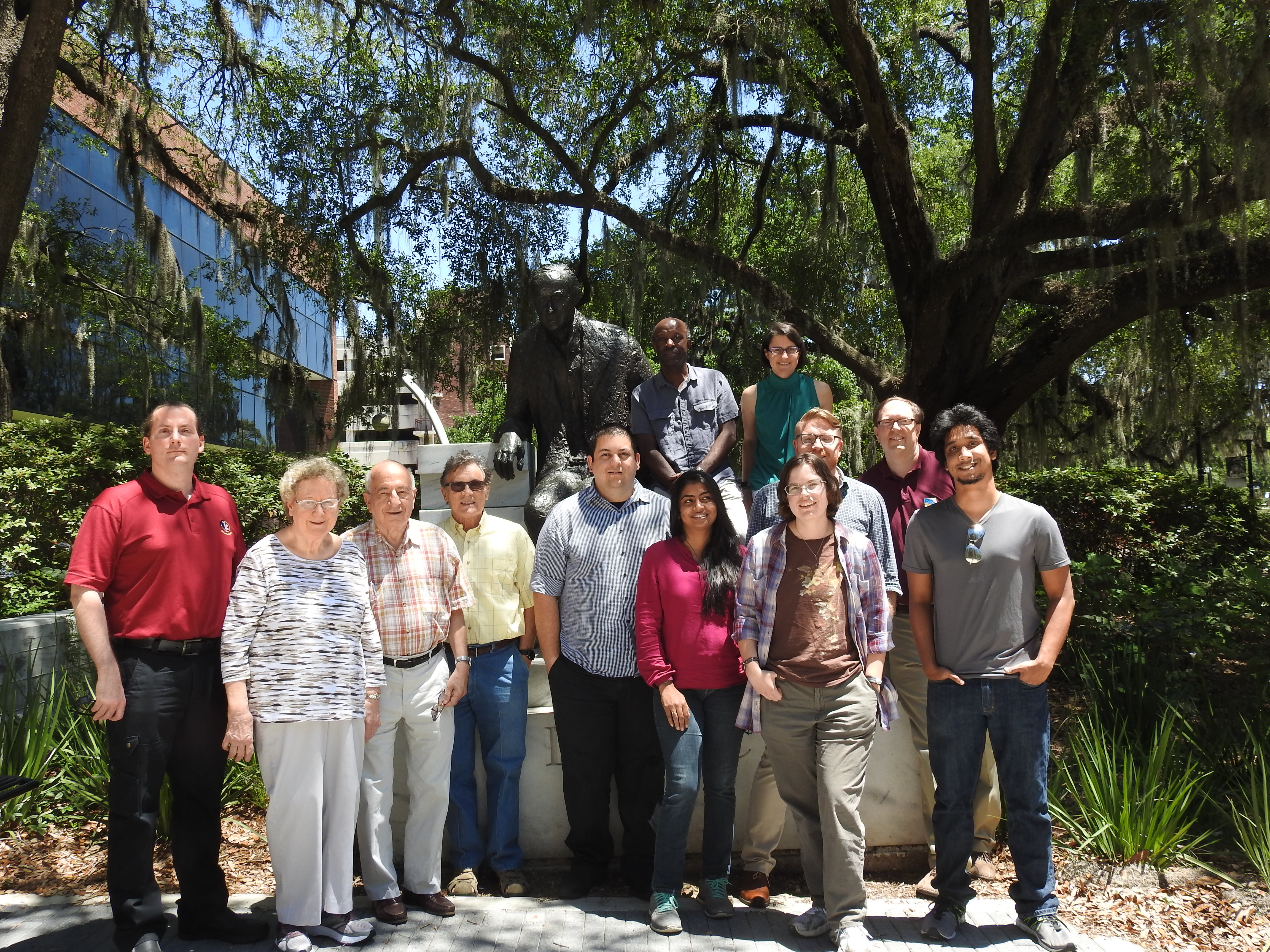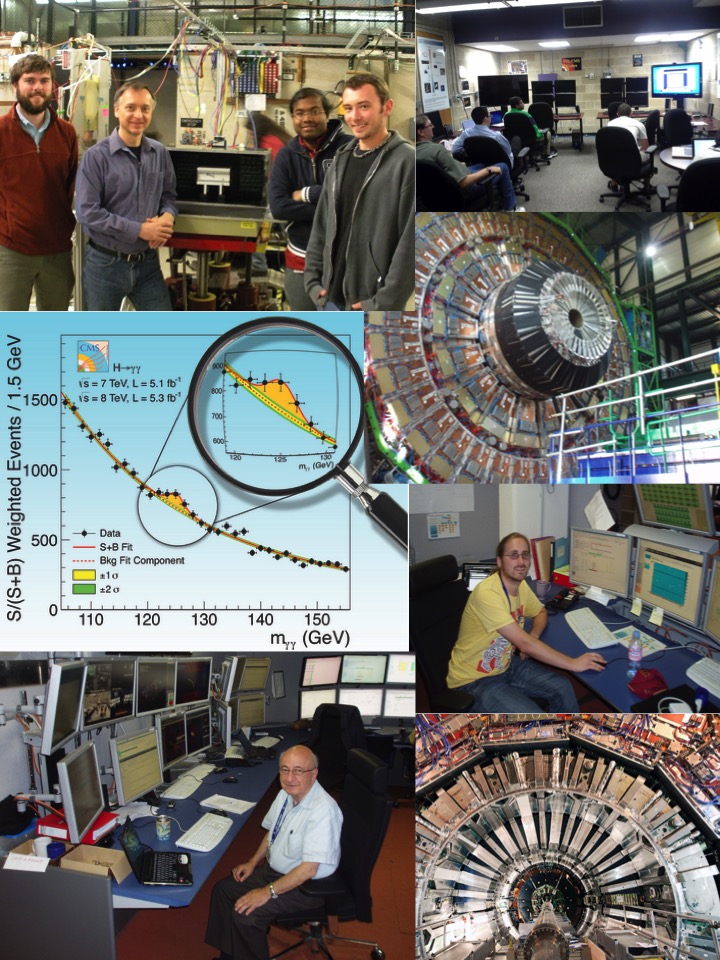
FSU Effort on the CMS Experiment at CERN
- Permanent members -- Todd Adams, Andrew Askew, Sharon Hagopian (Emeritus), Vasken Hagopian (Emeritus), Kurtis Johnson, Ted Kolberg, Harrison Prosper, Rachel Yohay
- Post Doctoral Fellows -- Abbas Hassani, Maria Mazza
- Staff – M. Bertoldi (retired)
- Graduate students – Ali Al Kadhim, Danish Alam, Steffi Bower, Robert Goff, Rafey Hashmi, Ryan Kim, Prova Purbita, Pak Yi Li
- Graduates – Andrew Kenjiro Ackert (Ph.D. 2017), Jordon Adams (Ph.D. 2015), Sam Bein (Ph.D. 2016), Joseph Bochenek (Ph.D. 2013), Brendan Diamond (Ph.D. 2015), Daniel Diaz (Ph.D. 2020), Sergei Gleyzer (Ph.D. 2011), Jeff Haas (Ph.D. 2013), Redwan Habibullah (Ph.D. 2022), Ajeeta Khatiwada (Ph.D. 2016), Suho Kim (Ph.D. 2023), Arka Santra (Ph.D. 2016), Venkatesh Veeraraghavan (Ph.D. 2013), Meutia Wulansatiti (Ph.D. 2025), De-Lin Xiong (Ph.D. 2022)
- Former Post-docs -- Raman Khurana, Thomas Perry, Anirban Saha, Varum Sharma, Oleksander Viazlo, Jingyu Zhang
Related Links
The Compact Muon Solenoid (CMS) is a detector that studies proton-proton collisions at the Large Hadron Collider (LHC) at the European particle physics laboratory (CERN) near Geneva, Switzerland. This is the world's most energetic particle collider with a center of mass energy of 13 TeV (a TeV is a trillion electron volts, more than 13000 times the energy of a proton at rest). The two general-purpose detectors operating at the LHC are CMS and ATLAS, both are designed to detect the Higgs particle, measure the properties of the top quark, and search for new particles such as dark matter and the supersymmetric partners of the standard family of elementary particles. The LHC began high energy collisions in 2010 and has had three very successful years of operations.

On July 4, 2012, the CMS and ATLAS collaborations announced the discovery of a new particle at a news conference watched around the world. The particle was found as part of the search for the Higgs boson. FSU scientists were part of the group who worked on this discovery.
The Florida State University is a member of the international collaboration that designed, built, and operates the CMS detector. CMS has a diameter of about 14 meters, a length of 20 meters and weighs 12,000 tons. If placed next to the Keen Building, the top of the detector would reach the fifth floor. The magnet inside the detector has a 4-tesla field inside a solenoidal volume of 6 meters diameter by 13 meters long. The detector has 4 major subsystems: (1) the tracking sub-system made of silicon; (2) the electromagnetic calorimeter (ECAL) made of lead tungstate crystals; (3) the hadron calorimeter (HCAL) made of brass and scintillator; and (4) the muon system composed of iron toroids. In addition the detector has a state of the art data acquisition system, a trigger system, and on-line and off-line computing.

The FSU CMS group has major detector responsibilities associated with the electromagnetic calorimeter (ECAL) (Adams, Askew), the hadron calorimeter (HCAL) (V. Hagopian, Kolberg), and the silicon pixel detector (Yohay). We are engaged in algorithm development, detector operations, data quality monitoring, testbeam studies, and detector upgrades.
The ECAL is a precision calorimeter designed to provide high quality data for studying decays of the Higgs boson to two photons. This analysis one of the two important channels used to discover the new particle announced in 2012. We have worked on calibration, monitoring, trigger studies, and detector operations.
We have been involved in the HCAL since the 1990's. At FSU, we constructed and tested various components of the detector and shipped them to CERN or Fermilab for further testing/assembly. For HCAL one of our major responsibilities is the calibration system that uses a pulsed nitrogen laser, LEDs, and a radioactive wire source.
The parts of the calorimeters that are located close to the LHC beamline are in a high radiation area where they can be damaged. We have studied radiation damage of scintillators, plastics, quartz fibers, silicon detectors,and lead tungstate crystals over the past decade. The availability of 4 Tesla magnets at the National High Magnetic Field Laboratory in Tallahassee enabled us to measure the effect of magnetic fields on various detector components.
The FSU CMS group is also active in the ongoing high granularity calorimeter (HGCAL) upgrade. The forward parts of the original calorimeter (near the beamline) will be replaced by a completely new detector with more robust technology. We are working on the R&D and construction of this replacement detector.
Since 2010 the major focus of our group has been analysis of the data for measurement of known reactions and searches for new physics. We have been responsible for numerous papers and results presented at conferences. Many of these have revolved around our expertise with the electromagnetic calorimeter. Some of our recent interests include:
- Searches for and discovery of the Higgs boson
- Searches for supersymmetry
- Gauge Mediated Supersymmetry Breaking (GMSB)
- Stealth SUSY
- Searches for dark matter
- Searches for new charged particles
- Searches for compositeness
- Searches for new extra dimensions
- Searches for a new symmetry
- Studies of double J/psi production
We have made a major commitment to this experiment and will reap many more physics results with the data already recorded and with the data that will be taken over the next decade. If you like more information on FSU participation in this experiment, contact us at tadams@hep.fsu.edu.
You can visit the CMS home page at CMS home page .
Some diagrams and pictures from the CMS detector:
- A 3D view of the CMS detector.
- See live WEB cam pictures of CMS.
- Various photos of CMS parts under construction at FSU and CERN.


